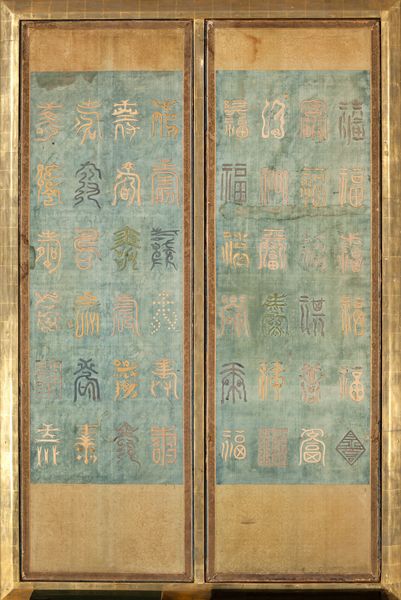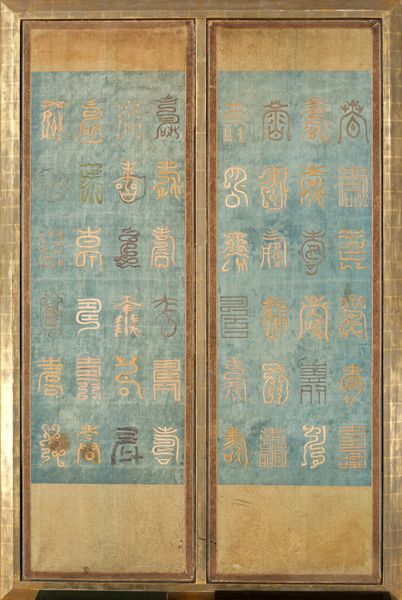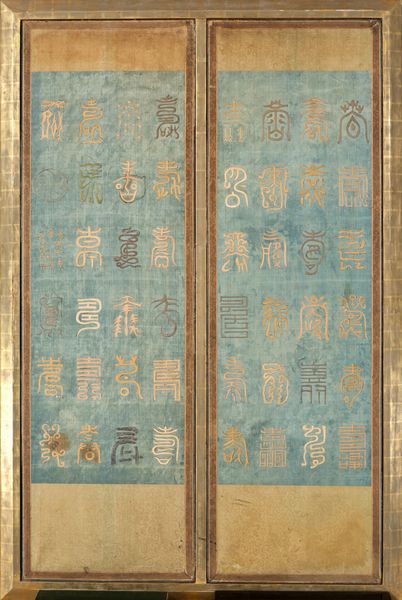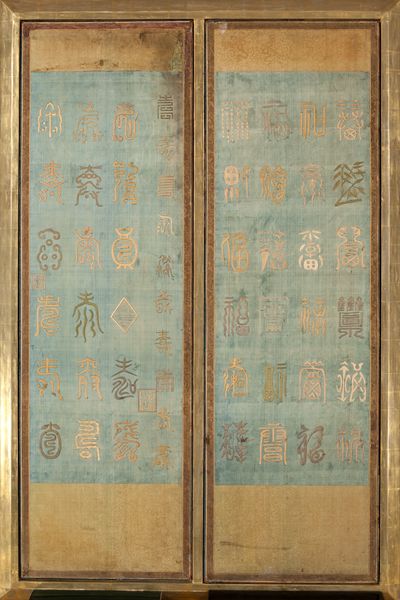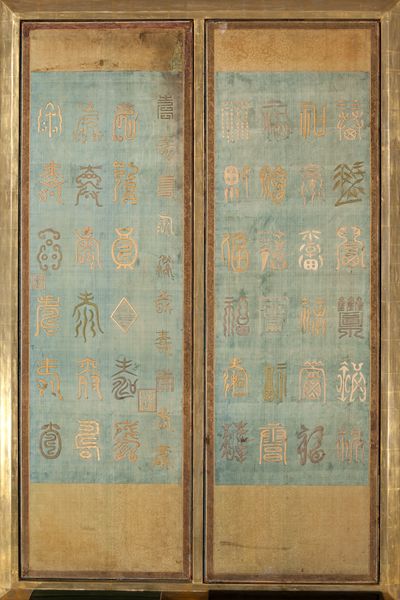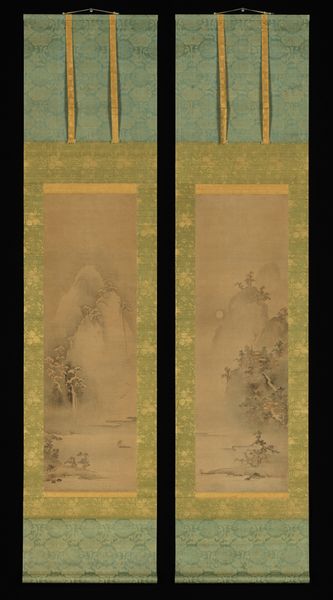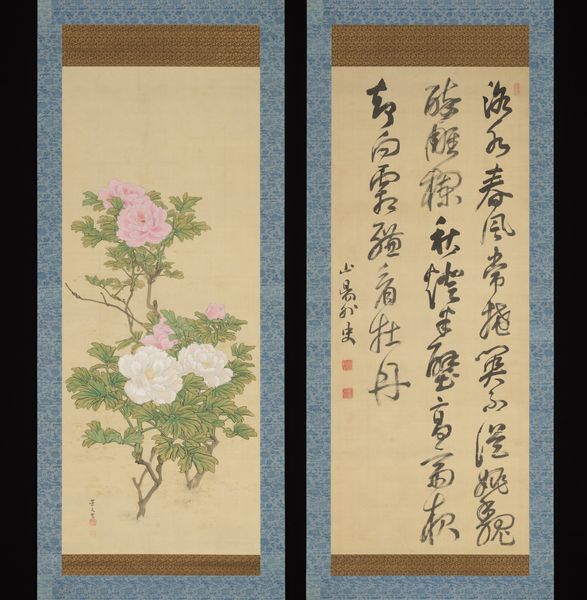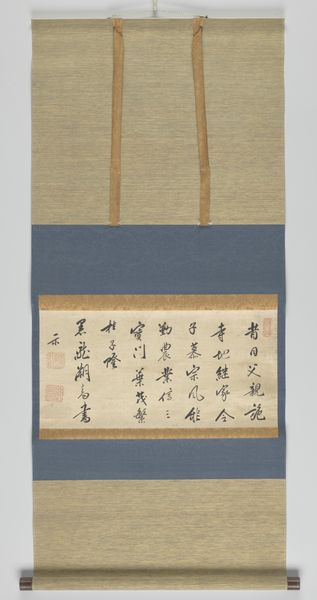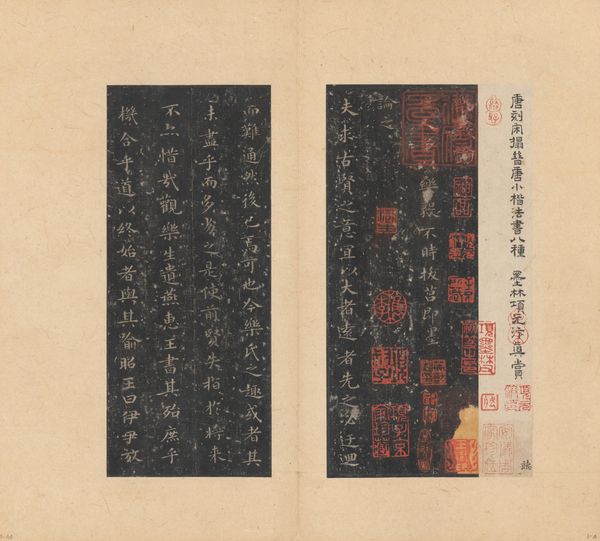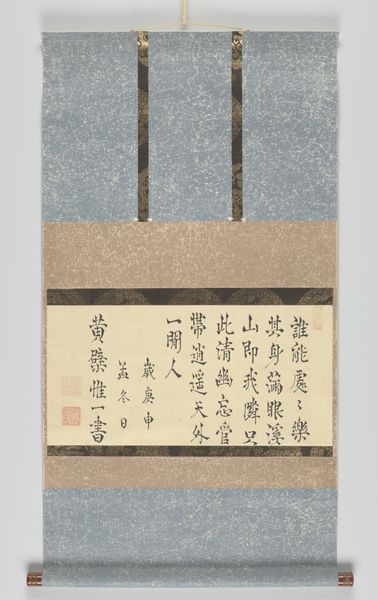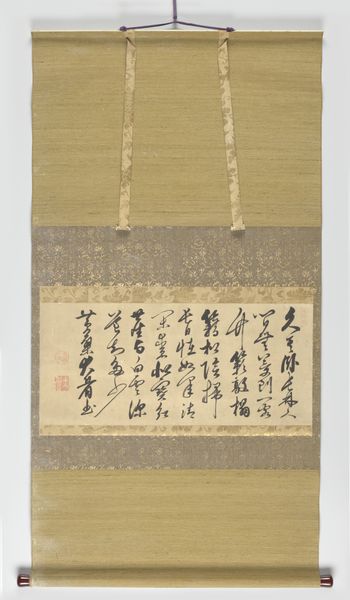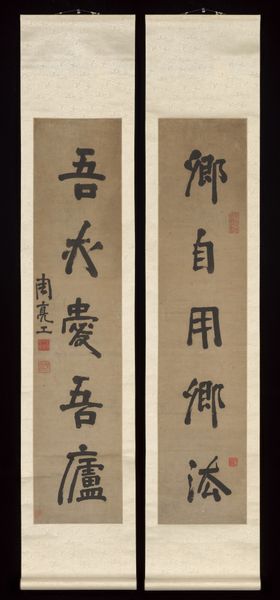
Embroidered Panels with Design of the Chinese Characters for “Longevity” and “Good Fortune” 18th-19th century
0:00
0:00
fibre-art, panel, silk, painting, textile, wood
#
wood texture
#
fibre-art
#
panel
#
silk
#
painting
#
asian-art
#
textile
#
wood
#
calligraphy
Dimensions: 34 3/16 × 12 7/8 in. (86.84 × 32.7 cm) (image)46 3/4 × 14 3/16 in. (118.75 × 36.04 cm) (mount)50 3/4 × 33 5/8 × 1 in. (128.91 × 85.41 × 2.54 cm) (outer frame)
Copyright: Public Domain
Curator: Standing before us are a pair of embroidered panels crafted sometime between the 18th and 19th centuries. They're titled "Embroidered Panels with Design of the Chinese Characters for 'Longevity' and 'Good Fortune'". Editor: My first thought is tranquility. The soft hues of the silk background, combined with the meticulous needlework, evoke a sense of peace. And the sheer labor involved... one has to wonder about the artisan's role and social position. Curator: These panels, currently housed at the Minneapolis Institute of Art, offer insights into the cultural values of the time, focusing on symbols desired for the home and family. Notice how calligraphy blends with textile work. The materials, silk thread meticulously stitched onto a painted background and wooden frame, signal the artistry and value placed on such works. Editor: The repetitive nature of the characters also intrigues me. Were these created for the elite or a broader segment of the population? We need to consider how workshops produced these pieces, the labor divisions involved, and the market for auspicious symbols at the time. Curator: Exactly! Examining the museum records, we can see pieces of a similar nature appearing across collections. The commodification of symbols became more popular through history. They were, essentially, a piece of good fortune and prosperity on display within the domestic sphere. Editor: Did particular workshops become known for their specialized embroidery techniques or specific character styles? That speaks volumes about branding and artisan status in the textile economy of the time. Were specific stitches used for certain panels or symbols? This might highlight the artisan's unique hand and the panel's place within the craft hierarchy. Curator: I hadn't considered it in terms of artisanal branding before. That really opens up possibilities to rethink these works not just as art objects but as markers of a textile-producing industry responding to complex consumer needs. Editor: These panels now make me think about how symbols like “longevity” and “good fortune” are packaged and sold even today. Examining the historical production and consumption gives depth to this continuous tradition of commodified hope. Curator: That’s a brilliant perspective – a thread connecting centuries of social values translated through art and accessible commodities. Editor: Indeed. Viewing these embroidered panels through both a historical and materialist lens reveals not only artistic skill but also broader societal dynamics and enduring human desires.
Comments
minneapolisinstituteofart almost 2 years ago
⋮
Each of these six panels features twenty-four Chinese characters, alternating between the characters for “longevity” (壽) and “good fortune” (福). The characters, embroidered in gold thread on a light-blue ground, represent a wide variety of scripts. Some are traditional, while others are less orthodox, including characters whose brushstrokes are formed by stylized bamboo, fish, or birds. These panels—probably from a set of eight or ten panels mounted individually or as a folding screen—would have been used as an auspicious backdrop for a sixtieth birthday celebration. The sixtieth year (called hwangap in Korean), marking one’s survival through a full sexagenary cycle (the twelve-pronged, sixty-year zodiac calendar), receives special commemoration in many cultures within the Chinese cultural sphere, even today.
Join the conversation
Join millions of artists and users on Artera today and experience the ultimate creative platform.
